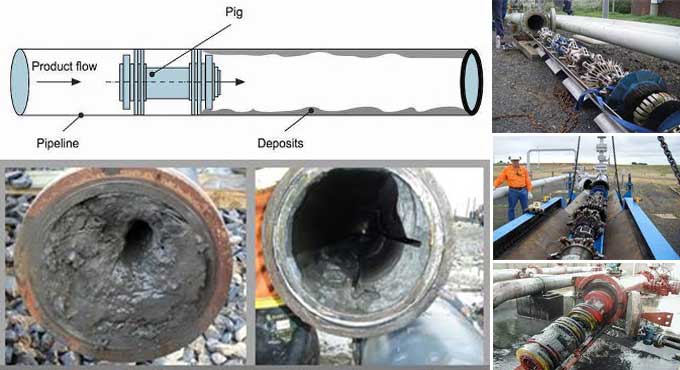
Pipeline Pigging: Everything you need to know

Pigging pipelines allow pipelines to be maintained and ensured to perform at their best. In addition to improving pipeline efficiency, decreasing maintenance costs, and increasing productivity, it is a cost-effective alternative to traditional maintenance and cleaning methods.
What do you mean by Pipeline Pigging?
The process of Pipeline pigging generally involves the usage of a ?pig? device in order to perform pipeline maintenance, proper cleaning tasks, inspection and maintenance of the pipeline. Pigs are propelled through the pipeline by the flow of liquids or gases in the line that is propelling them.
As mentioned previously, pigs are available in a variety of shapes and sizes, and they can be customized to meet the parameters of your particular pipeline. In terms of pipeline pigs, there are four main types: foam pigs, brush pigs, cup pigs, and intelligent pigs.
Types of Pipeline Pigging
Brush Pigs
Pipelines containing corrosive materials or sedimentary materials are cleaned with brush pigs. A rubber or nylon bristle is used for these brushes, which have a cylindrical shape.
Any residue present in the pipeline will be scrubbed away by the bristles. As brush pigs can travel long distances with minimal resistance, they are an ideal cleaning tool for long pipelines.
Foam Pigs
For pipelines that contain liquid, foam pigs are the ideal solution. In most cases, they are made of lightweight foam material and have a conical shape. They can thus travel through the pipeline without encountering much resistance.
Additionally, foam pigs come with brushes attached to their tails, which help clean out pipeline walls of debris. It can be difficult to control foam pigs in longer pipelines, so they are best suited to short pipelines.
Cup Pigs
Pipeline debris can be separated from the liquid using cup pigs. Their heads are shaped like cups, while their tails are shaped like discs or cups.
During its movement through the pipeline, the pig collects any sediment present in the cups. Sand and dirt can be collected most efficiently with cup pigs since larger particles can't be collected.
Intelligent Pigs
The purpose of intelligent pigs is to detect pipeline defects. The sensors are typically made from steel or plastic and contain a variety of components.
Merits of Pipeline Pigging
Oil and gas, energy, and water management industries depend on pipeline pigging. Pipelines are kept free of debris and maximized in efficiency by using pigging tools. Pigging pipelines has several advantages, including:
1. Saves Cost
Compared to traditional cleaning methods, pigging can save you a great deal of money. Using pigging tools instead of manual cleaning methods can save companies money on labour costs and other costs.
2. Better Efficiency
In order to make sure the pipeline runs efficiently and effectively, pipeline pigging can be used. Pigging reduces wear and tear on the pipeline and prevents unexpected downtime due to blockages by removing dirt and debris that can cause blockages. Cost savings over time are achieved by maximizing the pipeline's efficiency.
3. Lesser Maintenance
By enabling the pipeline operator to periodically view the interior of the pipeline, pipeline pigging can lower maintenance expenses. This can aid in the early detection of faults, enabling them to be rapidly fixed before they have a chance to result in significant difficulties or downtime.
4. Better Safety
Pipeline pigging has many benefits, one of which is its increased safety, which is one of its biggest advantages.
Using pigging tools, it can be possible to identify potential dangers, blockages, and damage to pipelines that can cause injury or damage before operations begin and the risk of injury or damage can be eliminated. Consequently, there is a lower risk of damaging the environment or pipelines as a result of this.
To learn more, watch the following video tutorial.
Video Source: Dexon Technology
Final Thoughts
Overall, pipeline pigging can be very beneficial to the safety, efficiency, and cost of the pipeline operations.
Through the use of pigging tools, companies will be able to improve the performance and longevity of their pipelines, in turn resulting in a cost-saving outcome over time.


